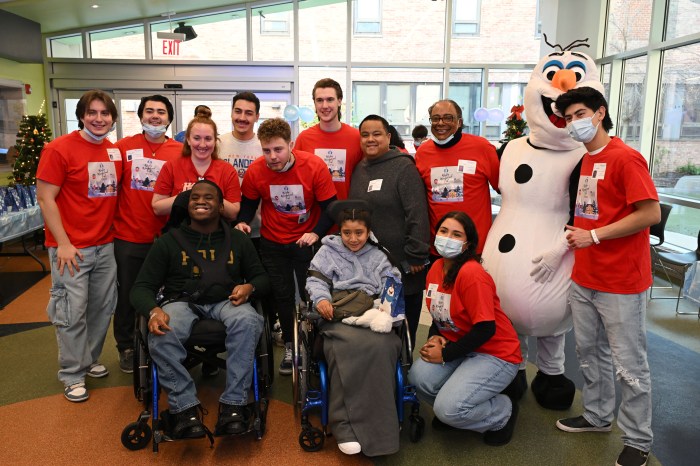Sylviane Boddy and Michelle Iocolano had no idea they would be joining the long list of award winners from the St. Francis Preparatory School Research Program. They sat together at Stuyvesant High School recently as the 2006 Intel Science Talent Search semifinalists were being announced.
The two were happy to be on hand, excited to have finished their 20-page research project after three long, grueling years of work. Then, when the 80 national winners were announced, both Boddy and Iocolano were chosen.
“I was completely surprised; I wasn’t expecting it at all,” Boddy said.
Iocolano, 17, was taken aback at the announcement too. “It feels amazing,” she said. “I was extremely happy and proud.”
The St. Francis Prep program’s director, Mary Ann Spicijaric, knows a little something about the science search - in her eight years with the science club, St. Francis Prep students have qualified for the semifinals every time. In fact, in 2003 and 2004 they had two or more chosen from the 1,800 applicants.
Generally, before applying for the contest, she goes through the papers with several English teachers, cutting here, adding there, and making adjustments in other areas of need. But when she read Iocolano and Boddy’s work, Spicijaric knew they had a legit chance.
“They write like experts,” praised Spicijaric. “They were like graduate-level papers. There was very little that had to be changed.
“I was expecting it,” she said, alluding to their spot in the semifinals. “Their dedication, the amount of data, the kind of data and its quality was just phenomenal.”
The St. Francis Prep science research program begins with sophomores, and, after they read through popular science literature and professional science journalists, they gain a focus and an idea for their research project. By the summer before their junior year, each student is expected to narrow their focus and find a professor to work with.
Both Iocolano and Boddy struggled finding a personal advisor at first, but eventually found a willing teacher.
“You look back at the three years, and you’re very proud,” said Iocolano, who worked with Dr. Suzanne Scarlata at Stony Brook; Boddy got help from Dr. Robert Schultz of Yale University.
Iocolano, a Flushing native with a 95 average, worked on neurodegenerative diseases and their progression, studying the bonding pattern of certain proteins, like alpha-synuclein, as they affect the onset of such diseases as Alzheimer’s and Parkinson’s. She found the proteins had a preference to certain membranes that offset the aforementioned diseases.
A Forest Hills resident who scored an impressive 2160 out of 2400 on her SATs, Boddy, 17, investigated the brain patterns of autistic patients. Looking at functional connectivity with the superior temporal socket of the brain, Boddy found that the makeup of those with autism is different in those without it, perhaps accounting for their social differences.
Six other Queens students qualified for the 2006 Intel Science Talent Search.
Townsend Harris produced four of them: Sangsoo Kim, 17; Maryam Ibrahim Sultan, 17; Christie Ching-Lin Sze, 16; and Anjie Zheng, 17. Xiaotian Chen, 18, of Jamaica Estates who attends Stuyvesant High School in Manhattan, was also one of the 80 selected, as was Sunnyside resident Nicole Elizabeth Lam, 17, from the Bronx High School of Science.
The 40 finalists will be announced January 25 with the winner crowned March 5 in Washington, DC, where $50,000 in college scholarships will be awarded.



































